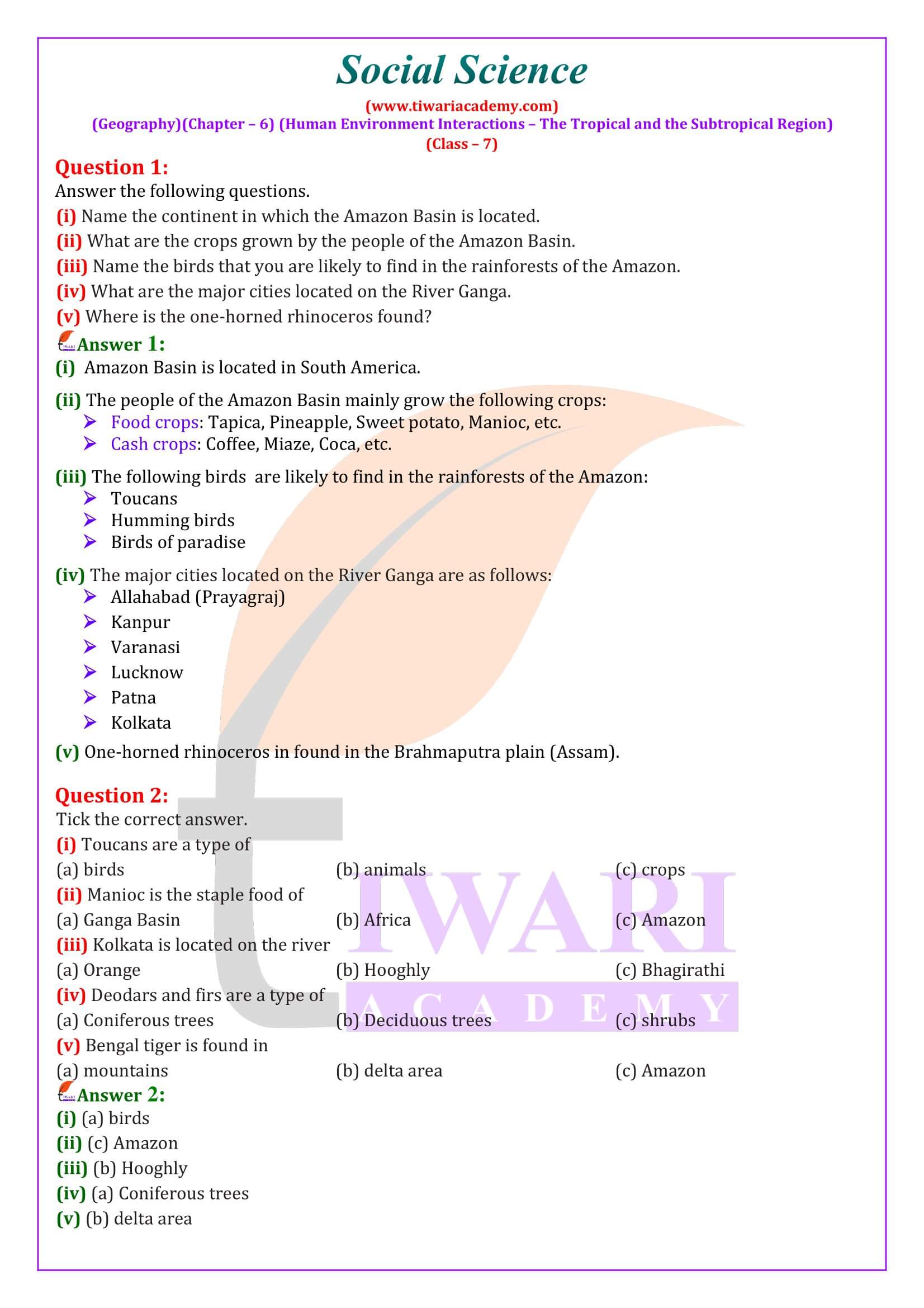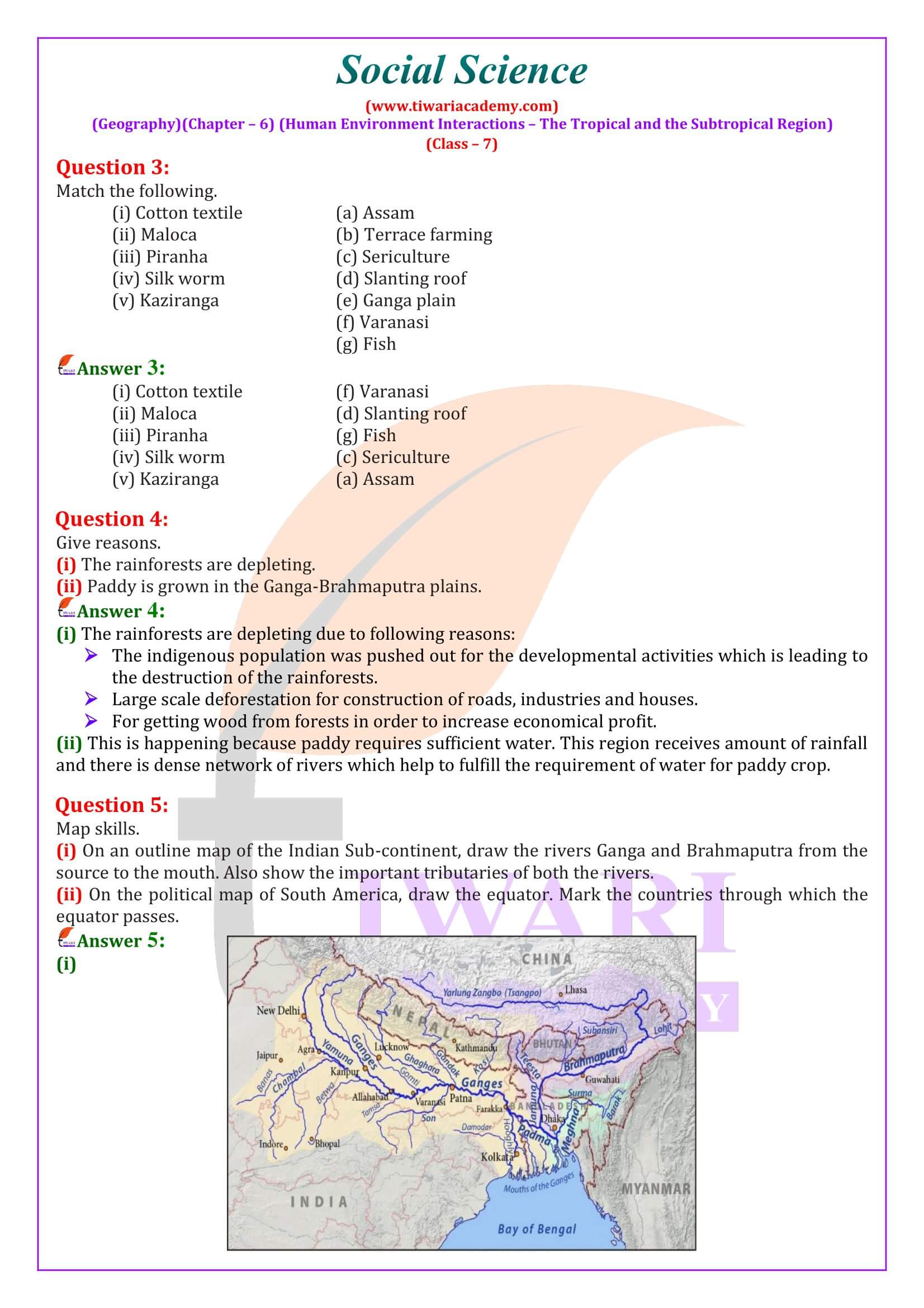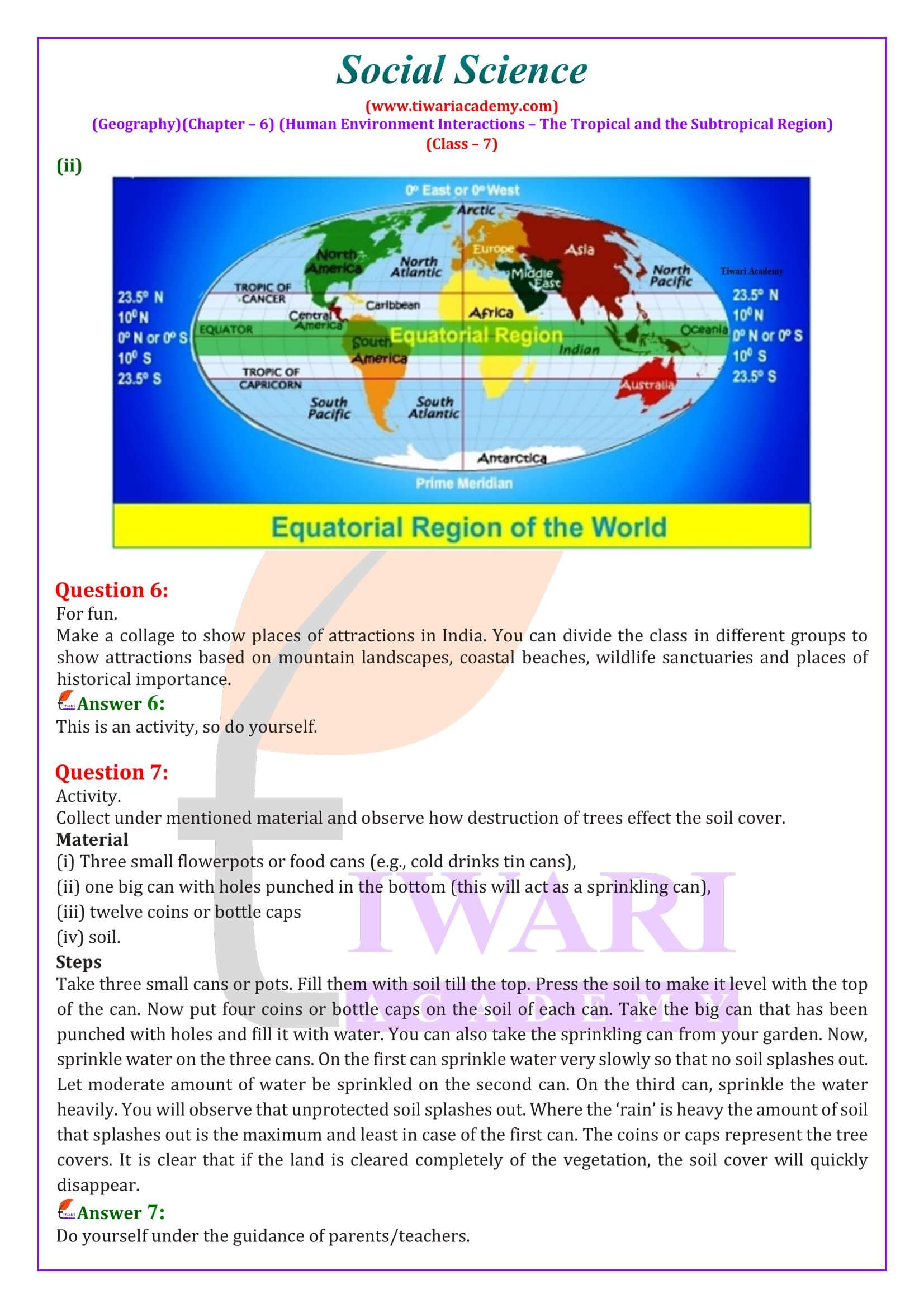NCERT Solutions for Class 7 Social Science Geography Chapter 6 Human Environment Interactions The Tropical and the Subtropical Region in English Medium and Hindi Medium free to View online or download in PDF. NCERT Solutions 2024-25 are updated on basis of latest Books for new academic session 2020–2021. Join the world of knowledge to share your views. You can also ask any educational fact or doubt in Discussion Forum.
NCERT Solutions for Class 7 Social Science Geography Chapter 6
Class 7th Geography Chapter 6 Solution in English and Hindi Medium
| Class: 7 | Geography |
| Subject: | Social Science |
| Chapter 6: | Human Environment Interactions – The Tropical and the Subtropical Region |
| Medium: | English and Hindi Medium |
| Academic Session: | 2024-25 |
Class 7 Geography Chapter 6 Explanation
Frequently Asked Questions on 7th Geography Chapter 6
Class 7 Geography Chapter 6 Extra Questions
What is Equatorial Region?
The tropical region lies very close to the equator; between 10°N and 10°S. So, it is referred to as the equatorial region.
What are river’s mouth?
The place where a river flows into another body of water is called the river’s mouth. For example, numerous tributaries join the Amazon River to form the Amazon basin.
What is the climate of Amazon Basin?
The Amazon Basin stretches directly on the equator and is characterized by hot and wet climate
throughout the year. Both day and nights are almost equally hot and humid. The skin feels sticky. It rains almost every day, that too without much warning. The day temperatures are high with very high humidity. At night the temperature goes down but the humidity remains high.
What are the sources of living in Amazon Basin?
People grow most of their food in small areas after clearing some trees in the forest. While men hunt and fish along the rivers, women take care of the crops. They mainly grow tapioca, pineapple and sweet potato. As hunting and fishing are uncertain it is the women who keep their families alive by feeding them the vegetables they grow. They practice “slash and burn agriculture”. The staple food is manioc, also known as cassava that grows under the ground like the potato. They also eat queen ants and egg sacs. Cash crops like coffee, maize and cocoa are also grown.
How do people make their houses in Amazon Basin?
The rain-forests provide a lot of wood for the houses. Some families live in thatched houses shaped like beehives. There are other large apartment-like houses called “Maloca” with a steeply slanting roof.
Where is the Ganga-Brahmaputra basin?
The tributaries of rivers Ganga and Brahmaputra together form the Ganga-Brahmaputra basin in the Indian subcontinent. The basin lies in the sub-tropical region that is situated between 10°N to 30°N latitudes.
Describe the people living in Ganga-Brahmaputra.
The basin area has varied topography. The environment plays a dominant role in the distribution
of the population. The mountain areas with steep slopes have inhospitable terrain. Therefore, less number of people live in the mountain area of the Ganga-Brahmaputra basin. The plain area provides the most suitable land for human habitation. The soil is fertile. Agriculture is the main occupation of the people where flat land is available to grow crops. The density of population of the plains is very high. The main crop is paddy. Since cultivation of paddy requires sufficient water, it is grown in the areas where the amount of rainfall is high.
What are the main crops grown in Ganga-Brahmaputra Basin?
The main crop is paddy. Wheat, maize, sorghum, gram and millets are the other crops that are grown. Cash crops like sugarcane and jute are also grown. Banana plantations are seen in some areas of the plain. In West Bengal and Assam tea is grown in plantations. Silk is produced through the cultivation of silk worms in parts of Bihar and Assam. In the mountains and hills, where the slopes are gentle, crops are grown on terraces.
Class 7 Social Science – Geography Chapter 6 – Important Questions
Name the continent in which the Amazon Basin is located.
Amazon Basin is located in South America.
What are the crops grown by the people of the Amazon Basin.
The people of the Amazon Basin mainly grow the following crops: Food crops: Tapica, Pineapple, Sweet potato, Manioc, etc. Cash crops: Coffee, Miaze, Coca, etc.
Name the birds that you are likely to find in the rainforests of the Amazon.
The following birds are likely to find in the rainforests of the Amazon: Toucans Humming birds Birds of paradise
What are the major cities located on the River Ganga.
The major cities located on the River Ganga are as follows: Allahabad (Prayagraj) Kanpur Varanasi Lucknow Patna Kolkata
Where is the one-horned rhinoceros found?
One-horned rhinoceros in found in the Brahmaputra plain (Assam).
The rainforests are depleting. Give reason.
The rainforests are depleting due to following reasons: The indigenous population was pushed out for the developmental activities which is leading to the destruction of the rainforests. Large scale deforestation for construction of roads, industries and houses. For getting wood from forests in order to increase economical profit.
Paddy is grown in the Ganga-Brahmaputra plains.
This is happening because paddy requires sufficient water. This region receives amount of rainfall and there is dense network of rivers which help to fulfill the requirement of water for paddy crop.
NCERT Solutions for Class 7 Social Science Geography Chapter 8 Human Environment Interactions – The Tropical and the Subtropical Region.
Download NCERT Solutions for Class 7 Social Science Geography Chapter 8 Human Environment Interactions – The Tropical and the Subtropical Region in PDF here. All question answers, give reasons, match the following, true false, fill in the blacks of chapter 8 class 7 Geography is given here.
Class 7 Geography Chapter 6 Question Answers
CBSE NCERT Solutions for Class 7 Social Science Geography Chapter 6 Human Environment Interactions – The Tropical and the Subtropical Region in Hindi and English Medium is given here in updated form for session 2024-25. Download these solutions for offline use free for academic session 2024-25.







